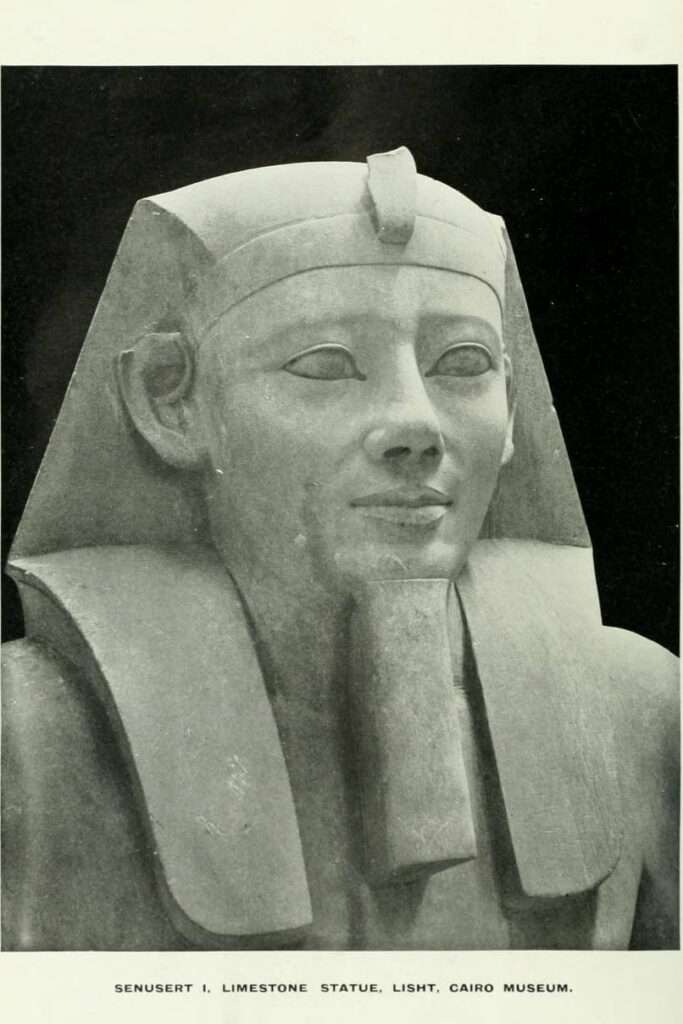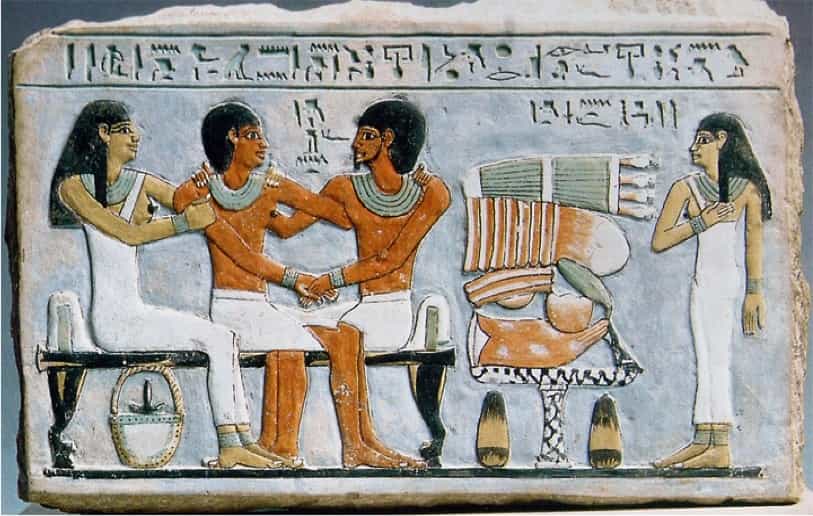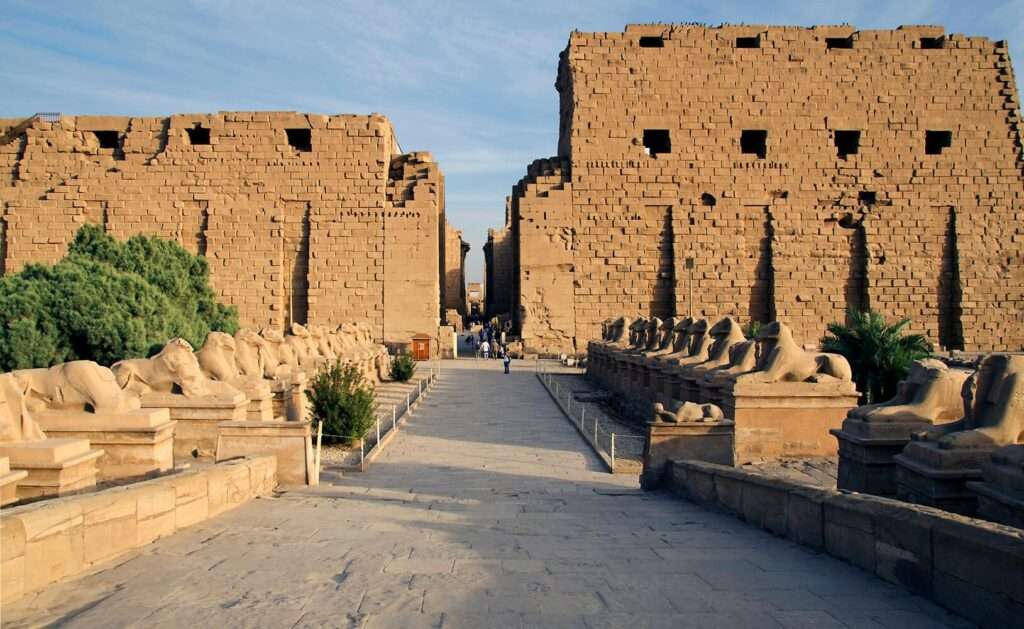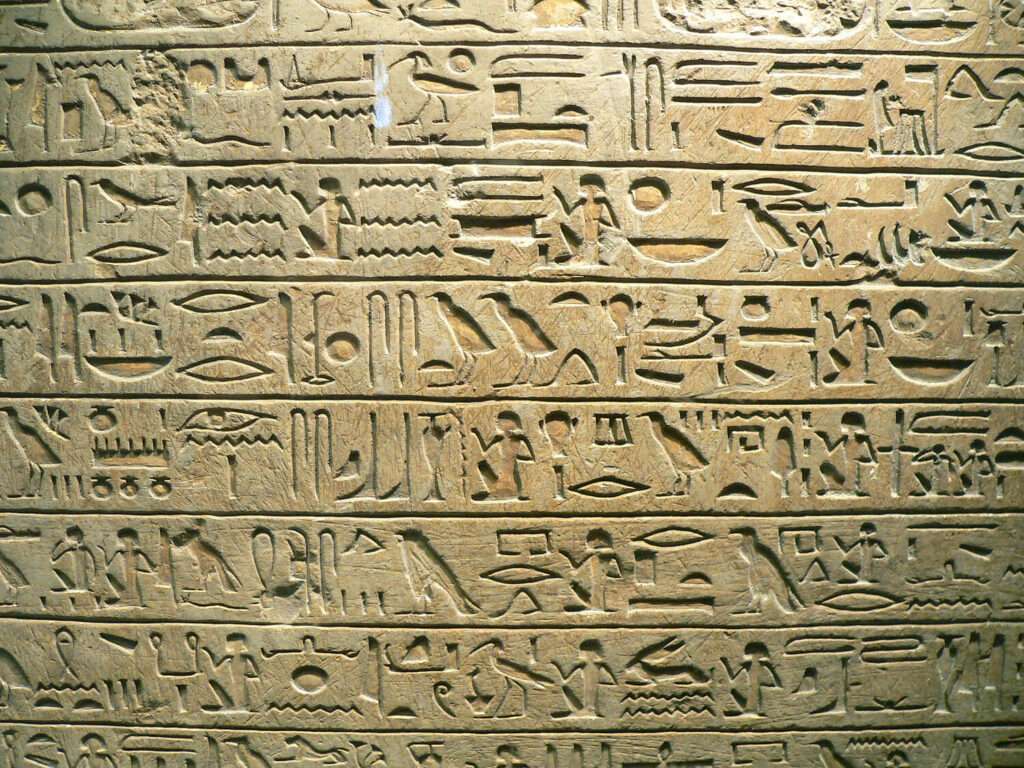1. Introduction
Egyptian mythology, a tapestry of tales entwining gods, mortals, and the cosmic interplay, has long captured the imagination of historians and enthusiasts alike. These myths, set against the backdrop of the Nile’s lush banks, have laid the foundational ethos of a civilization that thrived for millennia. Central to this rich historical fabric was Senusret I, a pivotal figure of the Twelfth Dynasty. His reign, marked by military prowess, cultural revitalization, and administrative reforms, distinguished him as not merely a pharaoh but as a linchpin in the annals of Ancient Egypt.
| Origin | Ancient Egyptian Civilization |
|---|---|
| Classification | Pharaoh |
| Family Members | Amenemhat I (Father), Queen Neferitatjenen (Mother), Amenemhat II (Son, possibly) |
| Region | Egypt |
| Associated with | Founder of the Middle Kingdom, Expansionist policies, Building projects, especially at the Temple of Karnak |
2. Background and Birth
Stepping back into the ancient corridors of Egypt, one can’t help but marvel at the rich lineage that preceded Senusret I. The Twelfth Dynasty pharaohs, particularly his immediate predecessor and father, Amenemhat I, laid down a legacy of stability and prosperity. Amenemhat I’s reign saw the reunification of Egypt, fortifying the nation against internal strife and external threats.
The world that greeted the birth of Senusret I was one shaped by strategic alliances, economic prosperity, and a resolute focus on maintaining Ma’at – the divine order and balance. Cities like Thebes and Memphis were flourishing hubs of commerce, culture, and religious fervor. The Nile, always Egypt’s lifeblood, continued its cyclic ebb and flow, ensuring bountiful harvests.
Amidst this backdrop, the birth of Senusret I wasn’t just the arrival of another royal heir. It marked the advent of a leader destined to further magnify the grandeur of Middle Kingdom Egypt.

3. Path to Kingship
The Father-Son Dynamic
In the annals of Egyptian history, the relationship between Amenemhat I and Senusret I stands out as one of mutual respect, trust, and shared visions. Amenemhat I, the founder of the Twelfth Dynasty, was acutely aware of the challenges of kingship. In his wisdom, he involved Senusret in state affairs from a young age, ensuring his heir was well-prepared for future responsibilities. They ruled as co-regents for a decade, a period that saw father and son forge a bond not just of blood but of shared governance.

The Road to the Throne
Senusret’s journey to sole rulership was not without its hurdles. During the co-regency, they faced both internal dissent and external threats. However, these challenges served as a crucible, refining Senusret’s leadership skills and showcasing his ability to navigate complexities. The pivotal event leading to his sole reign was the assassination of Amenemhat I. Though a tragic episode, it marked Senusret’s resolve to uphold his father’s legacy, consolidate power, and usher Egypt into an era of renewed splendor.
The ascension of Senusret I wasn’t merely a transition of power. It represented the continuation of a dynasty’s vision, an affirmation of divine mandate, and the promise of an illustrious reign ahead.
4. Military Campaigns:
Venturing South: Expansion into Nubia
Senusret I’s strategic gaze turned southward, towards Nubia, a region teeming with resources and strategic importance. Recognizing its potential, he embarked on a series of campaigns to bring this vast territory under Egyptian dominion. Throughout these expeditions, Senusret demonstrated both military acumen and infrastructural vision. He didn’t merely conquer; he fortified. Establishing a series of fortresses along the Nile, Senusret ensured a sustained Egyptian presence in Nubia. These fortifications, some of which stand to this day, bore witness to a blend of military strength and architectural prowess.

The Ripple Effect: Flourishing Egypt
The significance of these Nubian campaigns went far beyond territorial expansion. With Nubia under Egyptian control, Egypt enjoyed unparalleled access to gold mines, ivory, and other valuable resources. This influx of wealth translated into a booming economy, elevating Egypt’s status in the ancient world. Moreover, the fortifications bolstered trade routes and ensured the safe passage of goods, further enriching the Egyptian coffers.
But the gains weren’t merely economic. The successful campaigns augmented Egypt’s political stature, positioning it as a dominant force in northeastern Africa. Senusret I’s military ventures exemplified how strategic conquests could reshape the destinies of nations, setting Egypt on a trajectory of growth and unparalleled prosperity.
5. Cultural and Religious Contributions
Monuments to Eternity: Temple Constructions
Amidst the bustling life of the Middle Kingdom, Senusret I’s reign ushered in a renaissance of monumental construction. One of his most remarkable contributions to the architectural landscape was in the sacred precinct of Karnak. Today, as the sun’s rays break across its colossal pillars, it stands as a testament to Senusret’s devotion to the gods and his ambitions as a builder. Under his patronage, the temple complex expanded, with new sanctuaries and obelisks reaching for the heavens. These structures were not just feats of engineering; they were symbols of the divine connection between the pharaoh and the pantheon, embodying the spiritual ethos of the age.

Illuminating the Sun God: The Cult of Ra
While many gods were venerated in ancient Egypt, Senusret I held a particular reverence for Ra, the sun god. His devotion went beyond personal piety; it was a transformative force for Egypt’s religious landscape. Senusret actively promoted the cult of Ra, integrating its practices into state rituals and ensuring its prominence in the religious hierarchy. This elevation of Ra’s worship intertwined the sun god’s image with that of the pharaoh, symbolizing the divine illumination guiding Senusret’s reign.
Through his contributions, both architectural and spiritual, Senusret I intertwined his legacy with the very fabric of Egyptian culture and religion. His reign marked an era where the pharaoh wasn’t just a ruler but a beacon of cultural and religious vitality, leaving an indelible mark on the sands of time.
6. Economic and Administrative Reforms
Balancing the Scales
In an era defined by trade, taxation, and treasuries, Senusret I recognized the importance of standardized systems. By introducing new weights and measures, he sought to bring uniformity to the diverse economic landscape of Egypt. These standardized tools ensured fairness in trade, minimized disputes, and enhanced the credibility of Egyptian markets in the eyes of both domestic and foreign traders. Additionally, these reforms played a pivotal role in streamlining tax collections, ensuring that the state’s coffers were reliably filled.

Reimagining Governance
Senusret I’s vision extended beyond the capital and deep into Egypt’s provinces. Recognizing the unique challenges and potential of each region, he embarked on a comprehensive reorganization of provincial governance. Instead of a one-size-fits-all approach, provinces were granted a degree of autonomy, ensuring that local leaders could address regional issues with tailored solutions. This decentralized model fostered a sense of ownership among provincial governors while maintaining allegiance to the central authority.
Furthermore, the reorganization was characterized by checks and balances. Regular inspections and audits ensured that while provinces had autonomy, they operated within the broader framework of the state’s objectives. This balance of central oversight and local initiative led to efficient governance, reducing bureaucratic delays and promoting prosperity across Egypt.
Under Senusret I, Egypt didn’t merely thrive; it evolved. Through shrewd economic policies and administrative reforms, he laid the groundwork for a system that balanced growth with governance, prosperity with propriety.
7. Modern-day Recognition
From the Sands to the Showcases
Centuries have rolled on, yet the impact of Senusret I is palpable in modern-day museums and historical landmarks. Many renowned institutions, from the British Museum in London to the Egyptian Museum in Cairo, showcase artifacts from his reign — intricately carved statues, inscribed stelae, and ornate jewelry. These tangible remnants serve as a bridge, connecting contemporary viewers to the grandeur of Middle Kingdom Egypt.
Furthermore, historical sites across Egypt resonate with Senusret’s influence. The fortresses in Nubia, the expanded precincts of Karnak, and the remnants of once-thriving cities bear silent testimony to his ambitious vision and enduring legacy.
Deciphering the Past
In today’s age, as scholars and enthusiasts delve into the intricacies of ancient Egypt, Senusret I emerges as a central figure. His reign is pivotal in understanding the socio-political dynamics, economic systems, and religious transformations of the Middle Kingdom. Modern research often cites his administrative reforms as precursors to efficient governance models, while his cultural contributions shed light on the artistic zenith of the period.
Moreover, as contemporary society grapples with issues of leadership, governance, and cultural preservation, the reign of Senusret I offers insights and inspirations. His balanced approach to expansion and internal development, combined with his focus on both the divine and the mundane, provides a holistic model of rulership worth emulating.
In essence, Senusret I, though an ancient pharaoh, continues to inspire, educate, and fascinate the modern world, underscoring the timeless relevance of history and its protagonists.
8. Conclusion
Senusret I, a luminary of the Twelfth Dynasty, cast an indomitable shadow over ancient Egypt, weaving together military might, cultural renaissance, and administrative acuity. His reign, a confluence of expansionist pursuits and internal consolidations, set the tone for an era of unprecedented stability and prosperity. By championing economic reforms, fortifying boundaries, and fostering religious fervor, he etched his name into the annals of history. Today, as we navigate the vast corridors of Egypt’s past, Senusret I emerges as a linchpin, providing invaluable insights into the sociopolitical and cultural tapestry of the Middle Kingdom. His reign, far from being a mere historical footnote, remains a vibrant chapter that guides, educates, and inspires our understanding of a civilization that once stood at the crossroads of innovation and antiquity.
